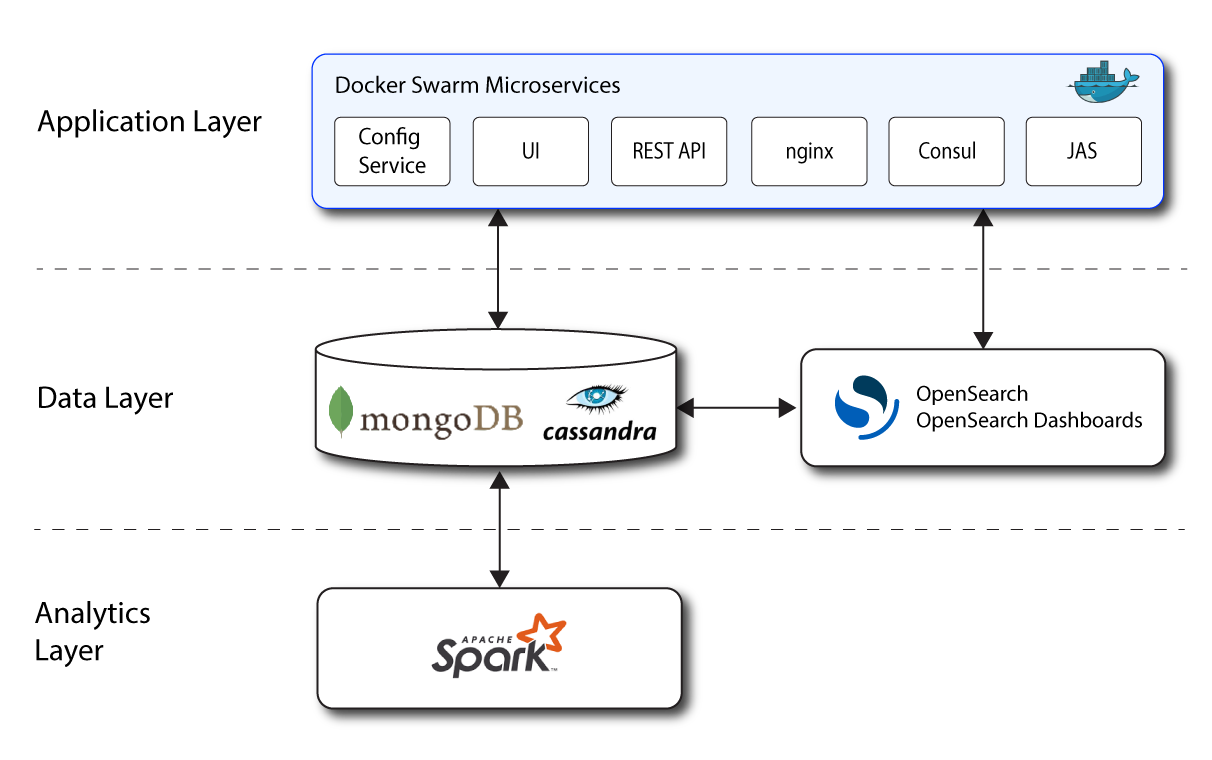Architecture in Brief
PingOne Autonomous Identity’s flexible architecture can deploy in any number of ways: single-node or multi-node configurations across on-prem, cloud, hybrid, or multi-cloud environments. The PingOne Autonomous Identity architecture has a simple three-layer conceptual model:
-
Application Layer. PingOne Autonomous Identity implements a flexible Docker Swarm microservices architecture, where multiple applications run together in containers. The microservices component provides flexible configuration and end-user interaction to the deployment. The microservices components are the following:
-
PingOne Autonomous Identity UI. PingOne Autonomous Identity supports a dynamic UI that displays the entitlements, confidence scores, and recommendations.
-
PingOne Autonomous Identity API. PingOne Autonomous Identity provides an API that can access endpoints using REST. This allows easy scripting and programming for your system.
-
Self-Service Tool. The self-service tool lets users reset their PingOne Autonomous Identity passwords.
-
Backend Repository. The backend repository stores PingOne Autonomous Identity user information. To interface with the backend repository, you can use the
phpldapadmintool to enter and manage users. -
Configuration Service. PingOne Autonomous Identity supports a configuration service that allows you to set parameters for your system and processes.
-
Nginx. Nginx is a popular HTTP server and reverse proxy for routing HTTPS traffic.
-
Hashicorp Consul. Consul is a third-party system for service discovery and configuration.
-
Apache Livy. PingOne Autonomous Identity supports Apache Livy to provide a RESTful interface to Apache Spark.
-
Java API Service. PingOne Autonomous Identity supports the Java API Service for RESTful interface to the Cassandra or MongoDB database.
-
-
Data Layer. PingOne Autonomous Identity supports Apache Cassandra NoSQL and MongoDB databases to serve predictions, confidence scores, and prediction data to the end user. Apache Cassandra is a distributed and linearly scalable database with no single point of failure. MongoDB is a schema-free, distributed database that uses JSON-like documents as data objects. Java API Service (JAS) provides a REST interface to the databases.
PingOne Autonomous Identity also implements Open Distro for Elasticsearch and Kibana to improve search performance for its entitlement data. Elastic Persistent Search supports scalable writes and reads.
-
Analytics and Administration Layer. PingOne Autonomous Identity uses a multi-source Apache Spark analytics engine to generate the predictions and confidence scores. Apache Spark is a distributed, cluster-computing framework for AI machine learning for large datasets. PingOne Autonomous Identity runs the analytics jobs directly from the Spark master over Apache Livy REST interface.
Figure 1: A Simple Conceptual Image of the PingOne Autonomous Identity Architecture
